Introduction

It was my second time in Istanbul and as I already covered many of the “must see” tourist sights the first time I thought it was a good opportunity to shoot some more film this time around. Being less flexible with film it also helped that I already knew what to expect and where to go.


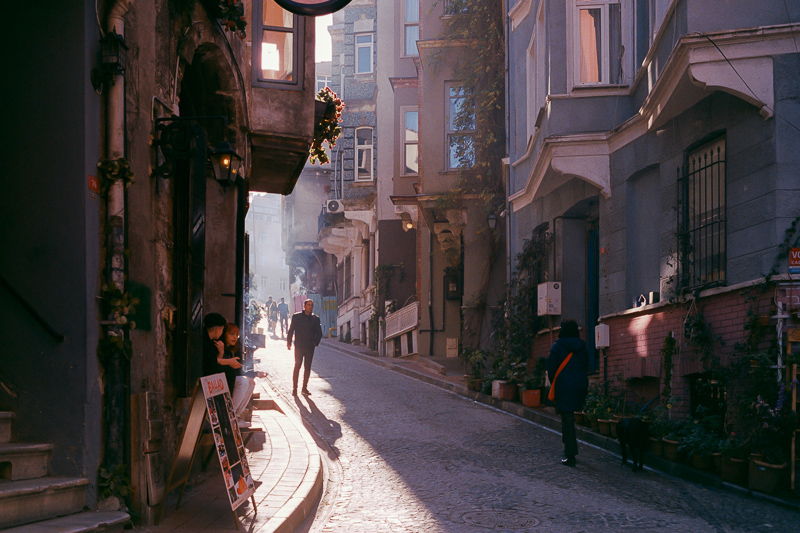


Contents
If you have been following my Analogue Adventures lately you already know some of these pictures from previous articles covering different films.
Here I will tell you which places I took those pictures and which areas I think are worth visiting.
Karaköy

I am starting with my favorite part of the city, which is Karaköy on the European side. Karaköy lies in between Galata and Emiönü – which are the most touristy places in Istanbul – yet some parts of it are kept surprisingly original.
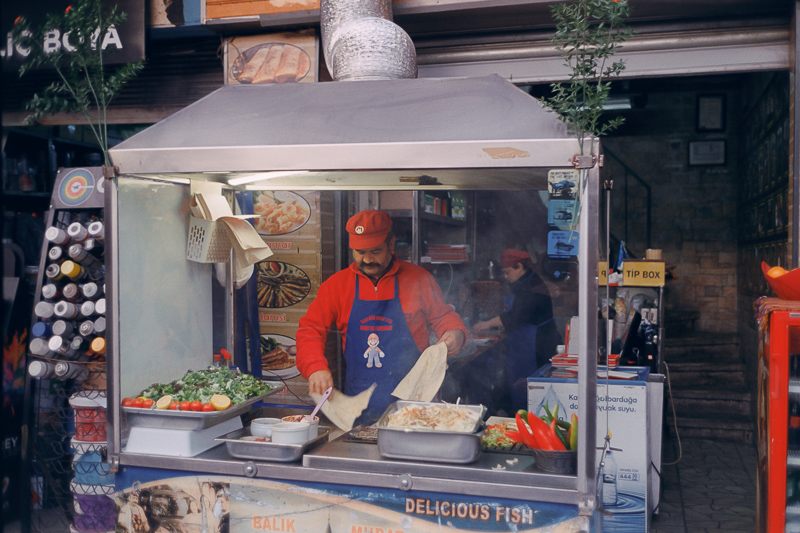
West of the Galata bridge is a small fish market and behind it a plethora of shops selling fishing equipment and tools. You will rarely encounter tourists in these narrow streets, but this is exactly what appeals to me: here you can still find some of that raw unpolished-for-tourists Istanbul.



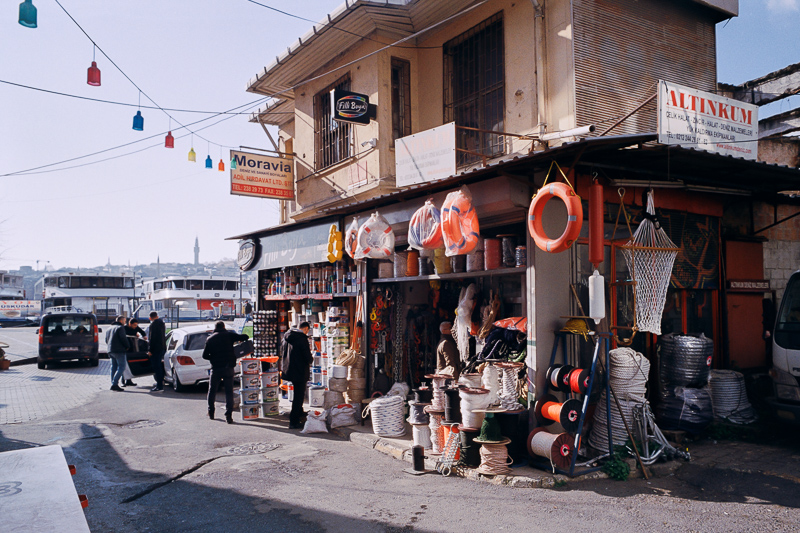

East of Galata bridge you can find a gentrification area with fancy bars and restaurants, if you walk there by the sea you can encounter fishermen on the way all day long:


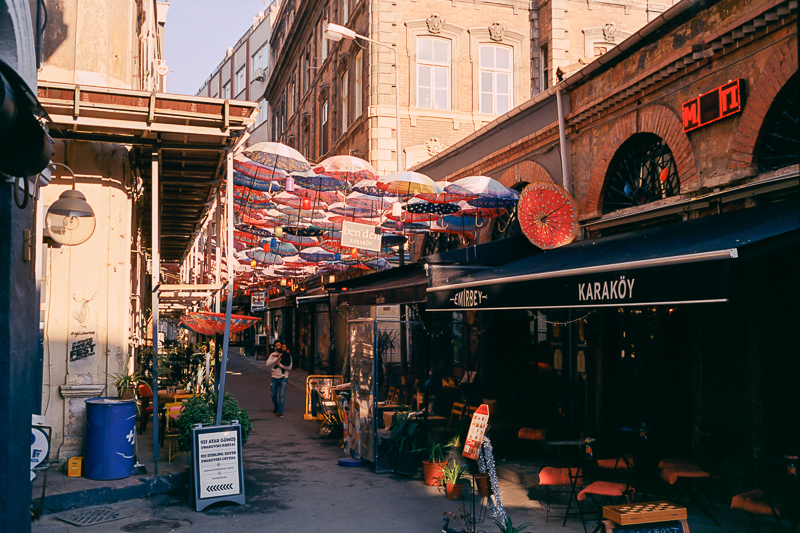




Galata

You cannot only find the famous Galata tower (you can see it in the picture above) and the famous red tram going from Tünel to Taksim here, it also leads to one of the biggest shopping streets which is Istiklal road. Because of the recent terror attack we didn’t spend any time in this area, but we did visit a nice antique village close to Galata tower and also the just recently (beginning of 2022) opened Galataport shopping mall.
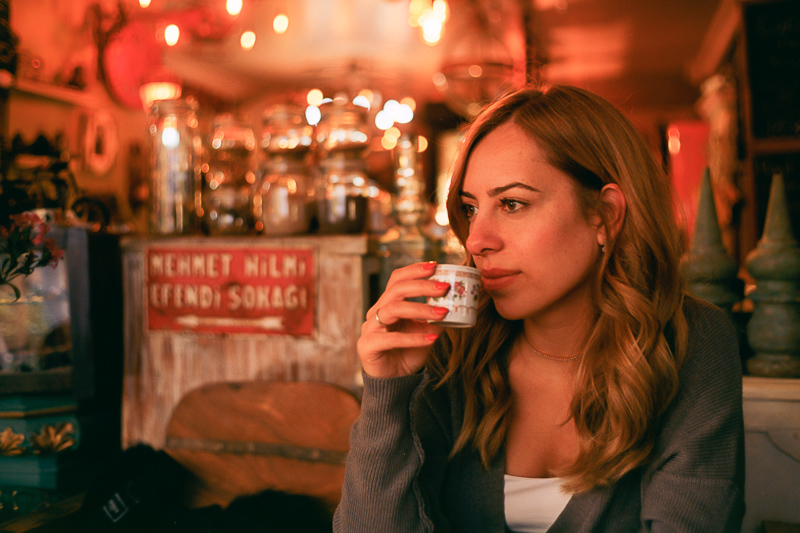
There are also some antique shops here that double as a cafe, so while enjoying your turkish tea and coffee you can check out the stuff and even take some pictures there.







If you walk to this part from the Galata bridge or the Karaköy tram stop you can also pay a short visit to Salt Galata, a library/cafe/museum with free entry and some nicely renovated architecture:

Now Galataport has been somewhat of a controversial project as it mainly appeals to the wealthier residents and tourists while some of the locals feel left behind because of the high prices of pretty much everything here.



Generally the shopping mall part didn’t appeal too much to me. Coming from Germany this looks like any other shopping mall you can find in pretty much any bigger city in western Europe.


There are two things I did enjoy here though: a small Ara Güler museum with interesting interior architecture which doubles as a small Leica shop (I did buy these two Ara Güler books with street photography from the Istanbul of the 60s) and the sunset view you can get at the pier in the evening – as long as there is no cruise ship blocking the view at least:

Emiönü/Sultanahmet

The area between Emiönü and Sultanahmet is where all the famous “must see” sights are located: Hagia Sofia (see picture above), Blue Mosque, Sunken Palace (see picture at the beginning of this article), Topkapi Palace, Grand Bazaar, you name it.
I had been visiting this area extensively the first time I went to Istanbul, so this time I mainly visited those sights that were under construction the first time, like the Sunken Palace and the Blue Mosque (still under construction).
I also couldn’t really avoid visiting the Grand Bazaar at least once:

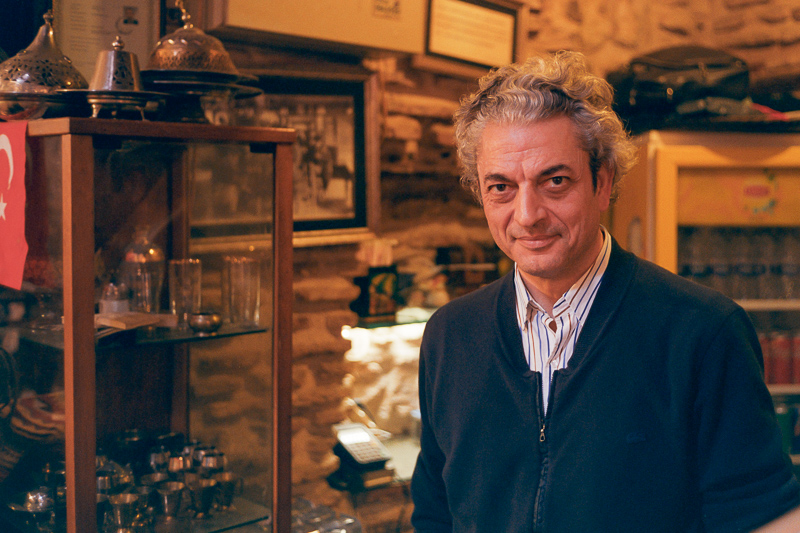


The streets in this area are always crowded, which makes it difficult to take pictures that are not completely cluttered with tourists:




When the weather is nice it can also be worthwhile to walk up the hill to the Süleymaniye mosque. The mosque alone is worth the visit, but you also have a great view from here.


Balat

Balat has become the gentrification area of Istanbul over the last years. You can find pop-up stores, antique shops, colorful houses with sometimes nice decoration and of course small overpriced bars and cafes.
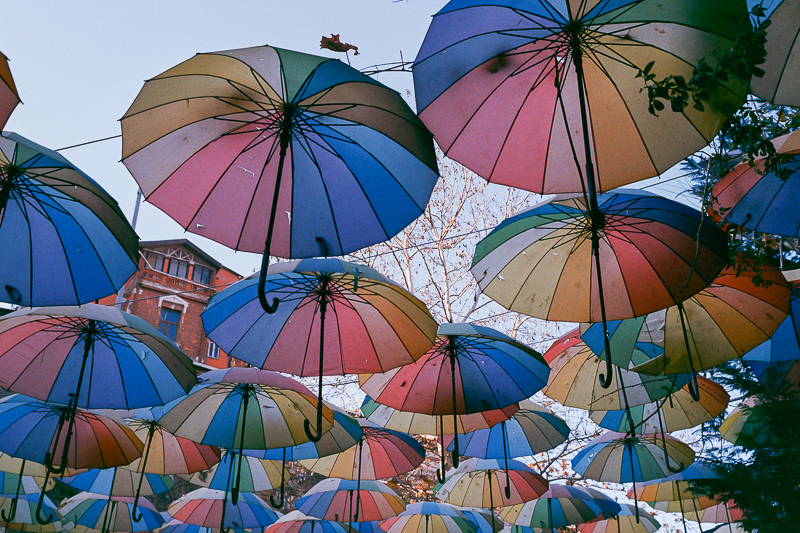



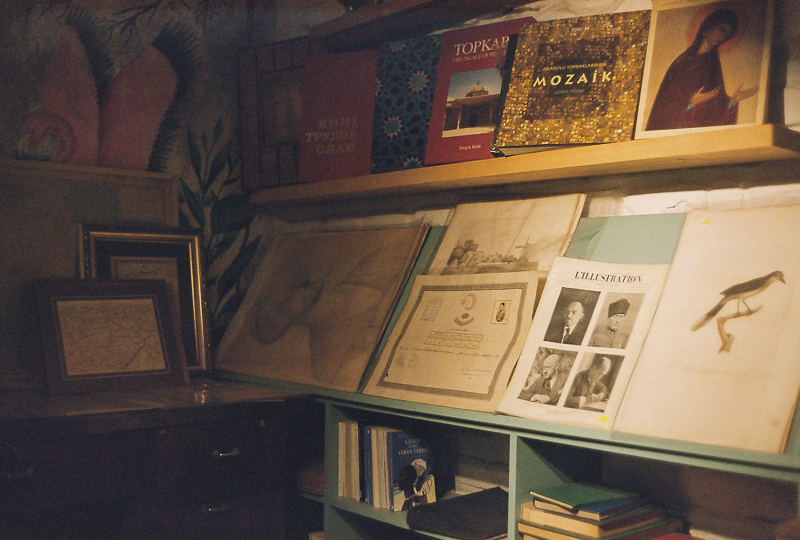

You can also find some streets here though, that haven’t fully adapted to this new concept yet:





Kadiköy

Kadiköy sounds very similar to my ears as Karaköy and in my opinion it is also somehow the pendant to Karaköy, but on Istanbul’s Asian side.






You can also find many bars and restaurants here and when I was visiting at the beginning of 2023 there was even a lot of street art to be found on most of the parking lots downtown.

Moda

Moda can be found directly south of Kadiköy. The transition between the two is fluent, but what Moda has going for it is the water front where people walk their dogs or simply like to sit on the rocks by the sea when the weather is nice.



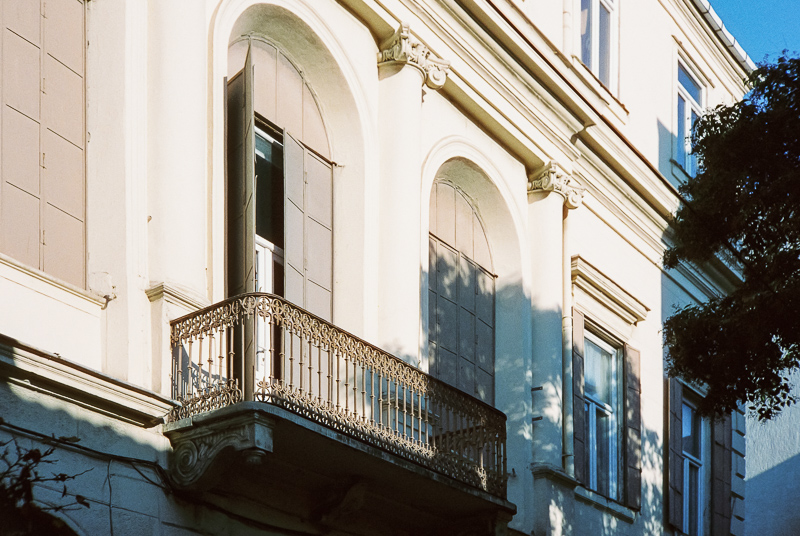
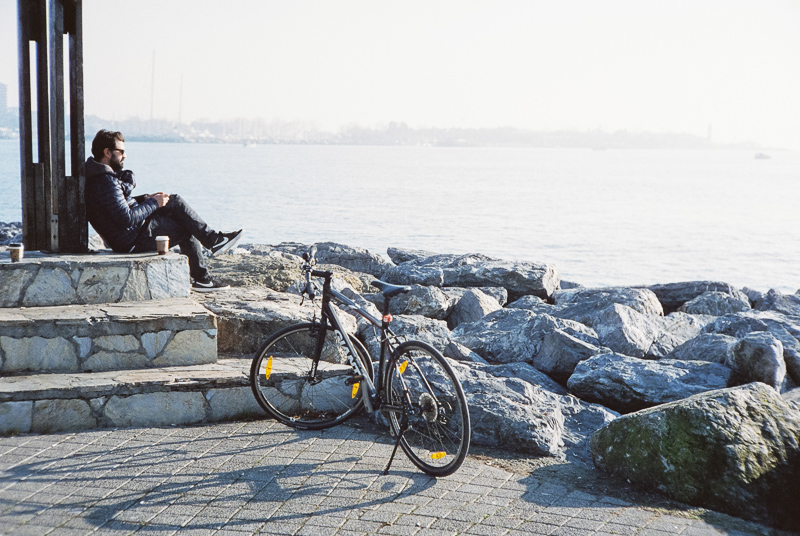
There are also many bars with a nice sunset view to be found here:

Üsküdar
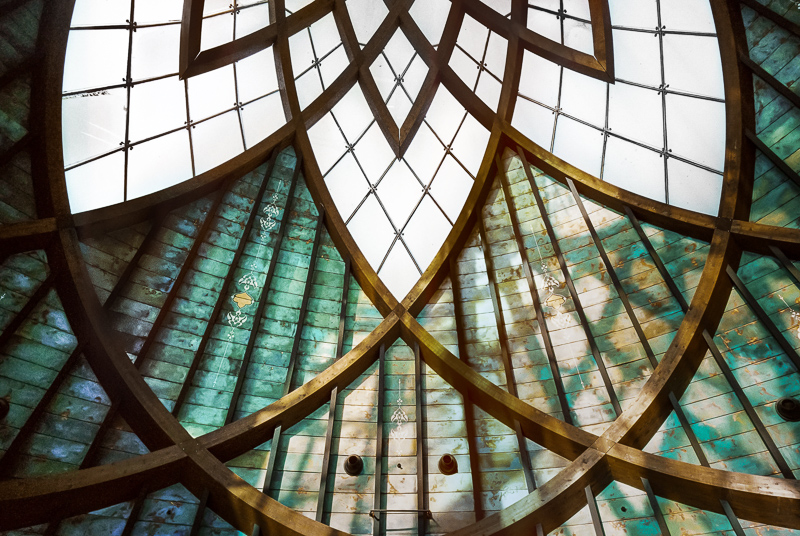
Üsküdar can be found north of Kadiköy. It is mainly famous for its view of the maiden tower, but that one was still under reconstruction when I was there.
What still made it worth to visit is Nevmekân Sahil, a combination of library, cafe and study hall. It has a pretty spectacular domed roof that makes for a cool background:

There is also a tiny museum in the basement:
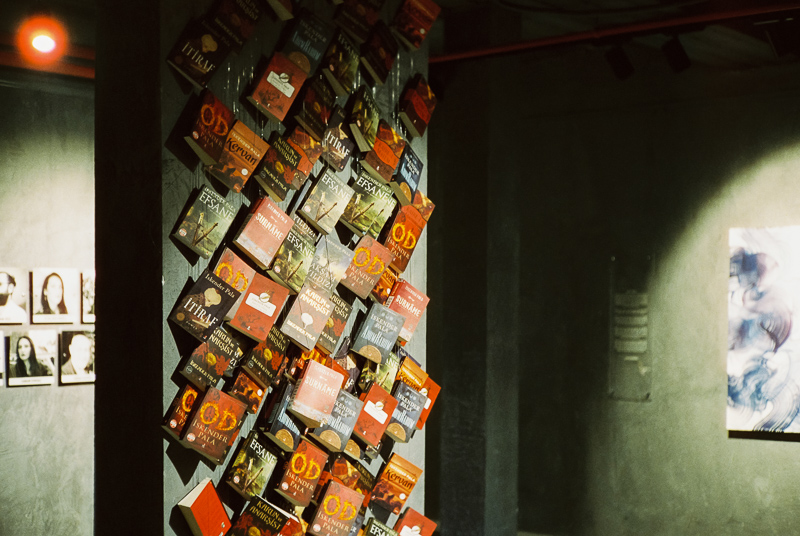
Apart from this I didn’t find Üsküdar very spectacular, except for that fact that it wasn’t that crowded compared to the other places mentioned here.




Last words
As you can see from this article I shot a lot of film this time in Istanbul. Coming from digital I was a bit hesitant about this, but I still gave it a shot, also because it wasn’t my first time there and most likely also won’t the last.

Now the look of film definitely helps with my idea of Istanbul and what I want pictures taken there to look like. What did bother me from time to time is the loss of flexibility compared to digital, mainly due to being tied to one ISO for the next 24-36 pictures.

To give you just two examples: for the underground cistern I knew I need a higher ISO film, but I went there in the morning to avoid the crowd so I also had a whole day ahead of me where an ISO400 film wasn’t really needed (or even contraproductive) and when arriving at the New Mosque (Yeni Cami) I had an ISO100 film loaded, not exactly the best choice for taking an indoor picture with an f/8.0 lens, as can be clearly seen from this underexposed mess:

So these are some things I was constantly thinking/worrying about. Where will I go? What will the weather be like? Which film to load next?
That being said I got to try many different films, where there were some positive surprises (Fuji X-Tra 400 and the expired Agfa Vista 200), some negative surprises (that dreadful Cinestill 800T), but in the end I got a lot of pictures I am happy with. And as long as this is the case who cares if they have been taken with a digital or an analogue camera?

Further Reading
- Analogue Adventures Landing Page
- Leica M lens reviews
- Composition Techniques
- Lens aberrations explained
Support Us
Did you find this article useful or just liked reading it? Treat us to a coffee or a roll of film!
![]()
![]()
![]() via Paypal
via Paypal
Latest posts by BastianK (see all)
- Vivo X200 Ultra – The Death of the compact Camera - June 29, 2025
- Review: Laowa 12mm 2.8 AF - June 26, 2025
- Review: Nikon AF-S 35mm 1.8G - June 21, 2025
Hepsi harika fotoğraflar. Ellerine emeğine sağlık. Çok beğendim.
Yorumun için teşekkür ederim!
Traumhafte Eindrücke von einer tollen Stadt.
Grandios eingefangen durch hervorragende Fotos. Very nice🥰🧿
honestly very impressed by this set of images.
Love to see travel reports like this.
While digital offers much better flexibilty and comfort, some of the vibe from analog that works so well in a place boasting with life and culture like istanbul simply gets lost.
Sure the vibe can be somewhat recreated with digital in post processing, but it doesnt feel right to me.
Question about processing, i find labs do quite a good job getting across the character of the film when scanning (white balance), but how much processing do you do, to get a result that makes the photo work as you remember it?
Most of these have seen very little post processing.
With C-41 development there are often some indoor pictures where I try to get rid of a really ugly color cast,
with the ECN-2 development coupled with Silbersalz35 scanning it is usually contrast only.
love the pictures, beautiful place.
Lovely set of photos!, Seems that MS lenses shines the most in film.
Quick question, how do you keep record of the aperture ? notes?
Thanks again!
I sometimes take notes, but I also don’t use all the aperture settings.
In 99% of cases it is either maximum aperture, one stop down or f/11.
Those that do not fall in this category I take notes 🙂
Wow such excellent shots! What is your favorite film of all these? I’m really digging the Ektar 100 and the Cinestill 800.
Fuji X-Tra 400 and Kodak Ektar 100.
But I think all the Fuji films went out of production anyway, so it might have been the last one.
I would you say to you a ton of fun, carrying your M6, along with practical tiny lenses like these MS-Optics. In real world usage, there is nothing wrong with MS-Optics. They have great character and are not boring and clinical. I would definitely invest in these lenses if I could, but I already have a nice collection of Leitz lenses to enjoy. Love the character of the lenses and you framing.
I love it, I appreciate the diversity of film and lenses used, with annotations, in a beautiful city! Actually a rare treat…
Very nice set of images portraying more “organic” side of Istanbul. I wonder if using a couple ND filters and slightly faster film would be the most liberating thing to do, in terms of making a versatile choice for morning/afternoon and indoor shots (combined with a fast lens), and avoiding ISO 200 and below films when in doubt.
But then, trying to choose a film freely these days is similar to voting in a non-democratic country, you pick the only option you get.
I do however think that the less clinical look suits those old streets and harbors, and good lab processing allowed for nice consistency between images.
On the other hand, the first image taken with expired Vista film is is what I consider to be perfect imperfection. 🙂